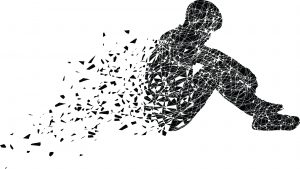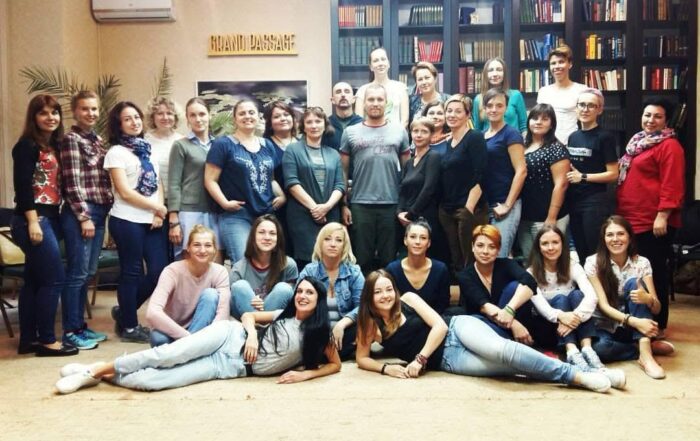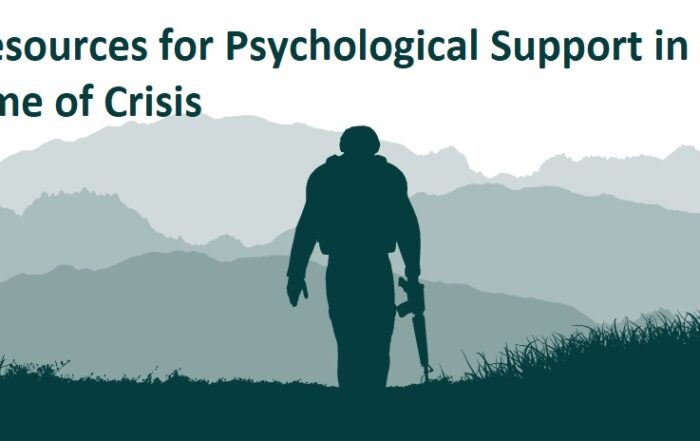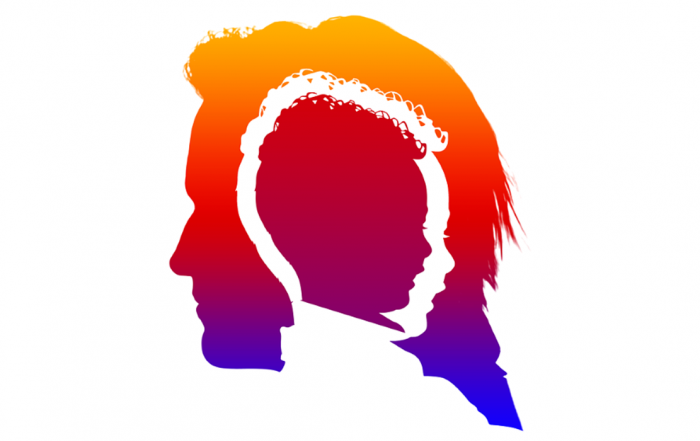Shock Trauma & Post-Traumatic Stress Disorder (PTSD)
The Bodynamic model of working with Shock Trauma and PTSD includes the body in a direct and physical way. The aim of Bodynamic trauma therapy is not only to work with the origin and lasting affects of the trauma itself, but to help the client develop new cognitive, psychosocial and physical resources that will allow greater possibilities for future action. The client will be able to remain focused and in contact with others while successfully containing the high level energies of the traumatic experience.
Since the themes of mutual Connection and individual Dignity are also basic to our work with trauma, our perspective lies at the intersection of attachment, trauma, and developmental work. Many years of experience and practice in healing individual trauma, but also trauma in massive crisis situations (including several war zones), and of sharing experiences and continuously improving methodology within the Bodynamic team, have helped the Bodynamic System develop a multi-faceted approach to the treatment of Shock Trauma and Post-Traumatic Stress Disorder, which includes several therapeutic aspects and goals:
-
 Reducing and ending PTSD symptoms: (hyper-vigilance, flashbacks, insomnia or obsessive thinking related to traumatic events)
Reducing and ending PTSD symptoms: (hyper-vigilance, flashbacks, insomnia or obsessive thinking related to traumatic events)- Spotting, understanding and ending dissociation
- Unlocking impulses frozen in the body
- Spotting life-changing decisions connected to trauma – and making re-decisions
- Including the body in a direct and physical way when working with PTSD, using methods such as body sensing, understanding reflex movement patterns, and assisting clients to recognize and let go of body tension patterns by using resistance in movement and counter-movements
- Helping the client re-establish a healthy reflex system – Fight, Flight and Orienting
- Helping the client understand the peak experience embedded within the shock, and the power she or he used to survive the original shock experience, whether it resulted in fighting, running away or “playing dead”
- Helping the client understand, sense and integrate the ME – the part of the human being that is our instinctual system, automatic, intuitive and collective knowledge, when experiencing high energy states such as those found in shock and peak experiences.
Peak Experiences and Transpersonal Reality
Bodynamic explores Peak Experiences as an initiation into knowledge of a transpersonal reality and a sense of connecting beyond the self. Peak experiences can be treated as something positive and powerful by itself, or as part of Shock Trauma therapy.
“Working with shock as a peak experience helps clients find the qualities and resources that ensured survival during the shock situation. In peak experiences there is a state of bliss, a higher kind of joy. It can seem like a conflict to think that intense fear or horror can be present at the same time as bliss, but it is true; working with this enables us to reclaim dignity and strength from the experience.”
Bodynamic Analysis helps people find hope again, and helps them look at the subconscious decision they made during a shock situation in order to reconsider and make a conscious decision on the same matter. This is very important tin order to resolve a particular shock.
Working with a Peak Experience one works with a unique positive high-energy experience that is normally surprising to people. It is worth exploring these experiences because they are full of high intensity and joyful treasured moments. By helping a client to understand the factors that contributed to the peak experience, we create new possibilities towards a heightened quality of life.
Instincts, Emotions, and Feelings
The Bodynamic approach to understanding and healing shock also includes an exploration of the intertwining patterns of Instincts, Emotions and Feelings in the human experience.
Brain research has shown that Instincts are reactions that involve activity in the oldest part of the brain – the brainstem. Instincts are active in situations where the ego cannot manage the high intensity energy coming from Shock Trauma situations, horror-terror situations, and life threatening experiences. The brain perceives a threat of life and death whether the threat is real or not.
Emotions are basic responses used to handle and regulate interaction with the outer world. Emotions are seen in all mammalian societies. They are connected to activity in the limbic system of the brain, including the amygdala and hippocampus.
Feelings contain a mixture of one or more basic emotions and activity in the cerebral cortex that are expressed in thoughts and words.
By studying the relationships of these three layers, we can better understand our responses to trigger events, memories, words and situations. Each layer can be a source of inner guidance and strength, but can also overwhelm and control us.
Part of the Bodynamic approach to therapy is to learn to contain energy and let emotions and instincts be a part of our inner guidance, until we begin to develop each characteristic as a resource, expanding our options for self-expression and containment of each trait in our daily lives.
Recent Blog Articles
Reclaiming Wholeness: Ukrainian Veterans and the Somatic Revolution of Healing
Reclaiming Wholeness: Ukrainian Veterans and the Somatic Revolution of Healing By Hadi Bahlawan-Marcher, Kristina Vasiljevaite Marcher & Dominic Mathias Ukraine: When the Model Met the Moment In 2015, in response to a rising mental health [...]
Self-Support Manual & Exercises for Crisis work (in English & Ukrainian)
The process of returning to civilian life might begin with the decision to end the service or to go home - in case of a volunteer battalion. However, while the body returns home, our mind might take a long time to integrate the experiences of war and to learn how to live at peace with ourselves and people around us. This process is often complex and manifests itself as insomnia, impulsiveness, excessive aggression, loss of interest in the profession (or other familiar activities) that the person engaged in before the war, depression, and lack of enjoyment in life.
DEVELOPMENTAL TRAUMA FROM A BODYNAMIC PERSPECTIVE
Developmental trauma from a bodynamic perspective By Ditte Marcher and Lene Wisbom, March 2020, ©Bodynamic International ApStranslated into English by Tina Janken Tage In Bodynamic we differentiate between open and closed coding’s, developmental trauma, PTSD [...]



